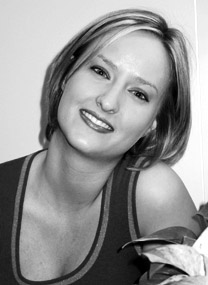
Professor Louis Jacobs, a paleontologist, works with fossils. (Courtesy of Paz Beatty)
SMU boasts a staff of professors who are considered experts in their field. One professor in the department of geosciences, however, has drawn the attention of not only his peers, but of students from across the globe.
Yuri Kimura, a doctorate candidate in the department, said she came to SMU from Japan just for the chance to work with SMU earth sciences professor Louis Jacobs.
“I have wanted to become a paleontologist since I don’t remember,” Kimura said.
“I knew about Dr. Jacobs’ work on mice, dinosaurs and more when I was studying paleo in Japan. The work in his early career inspired my interest in small mammal fossils.”
From his work in Africa with the National Museum of Nairobi in Kenya to his studies on the origin of the Murinae, the scientific subfamily that includes rats and mice, Jacobs has written a success story of his own.
What his peers recognized him for last month, however, were his contributions to education and helping students put pen to paper on their own success stories.
Thomas Adams was a graduate student who worked with Jacobs before receiving a doctorate in 2011.
Adams’ research in Platypterygius Huene, 1922 (Ichthyosauria, Ophthalmosauridae) from the late Cretaceous of Texas was circulated in Paleontologia Electronica, a publication of the Society of Vertebrate Paleontology.
“When I was a graduate student conducting my own research,” Adams said. “[Dr. Jacobs] understood that the student, me, came first and he was second, which allowed me the opportunity to make my own contribution to science.”
More than the work with students on campus, the Science Teachers Association of Texas presented Jacobs the Skoog Cup Nov. 9 for his contributions to kindergarten through 12th grade science education.
Bonnie Jacobs, his wife, who he met at University of Arizona where they were graduate students in the department of geosciences and who also teaches in the department of geosciences, said he deserves the honor.
“I am so proud of Louis,” she said.
“He has accomplished such a great deal as a scientist, has been a wonderful mentor to his students and has been a wonderful father and husband as well.”
Jacobs took the lead in his career while their two children were young and, after that, traded off traveling with his wife so they would both get the chance to work in the field.
After years in the field, he said his big project now is to understand how the separation of Africa and South America affected life through geologic time.
Jacobs has been impressed by the works of his students.
” I worked with the Fort Worth Museum on the Lone Star Dinosaurs Teacher Institute,” Jacobs said, “which took teachers to the field and dinosaurs to our labs where many SMU students worked the bones out of the rocks allowing them to be studied – and named – by even more SMU students.”
One of the student-studied dinosaurs will be on display at the Dec. 1 opening of the Perot Museum of Nature and Science, the building just off Interstate 35 with the glass escalator sticking out of slanted, mountain-like walls downtown.
The event is open to the public, but if students don’t get the chance to go, Jacobs said he encourages students from across campus to stop by the department of geosciences.
“Any SMU student, regardless of major, experience or interests is welcome in my labs.”









